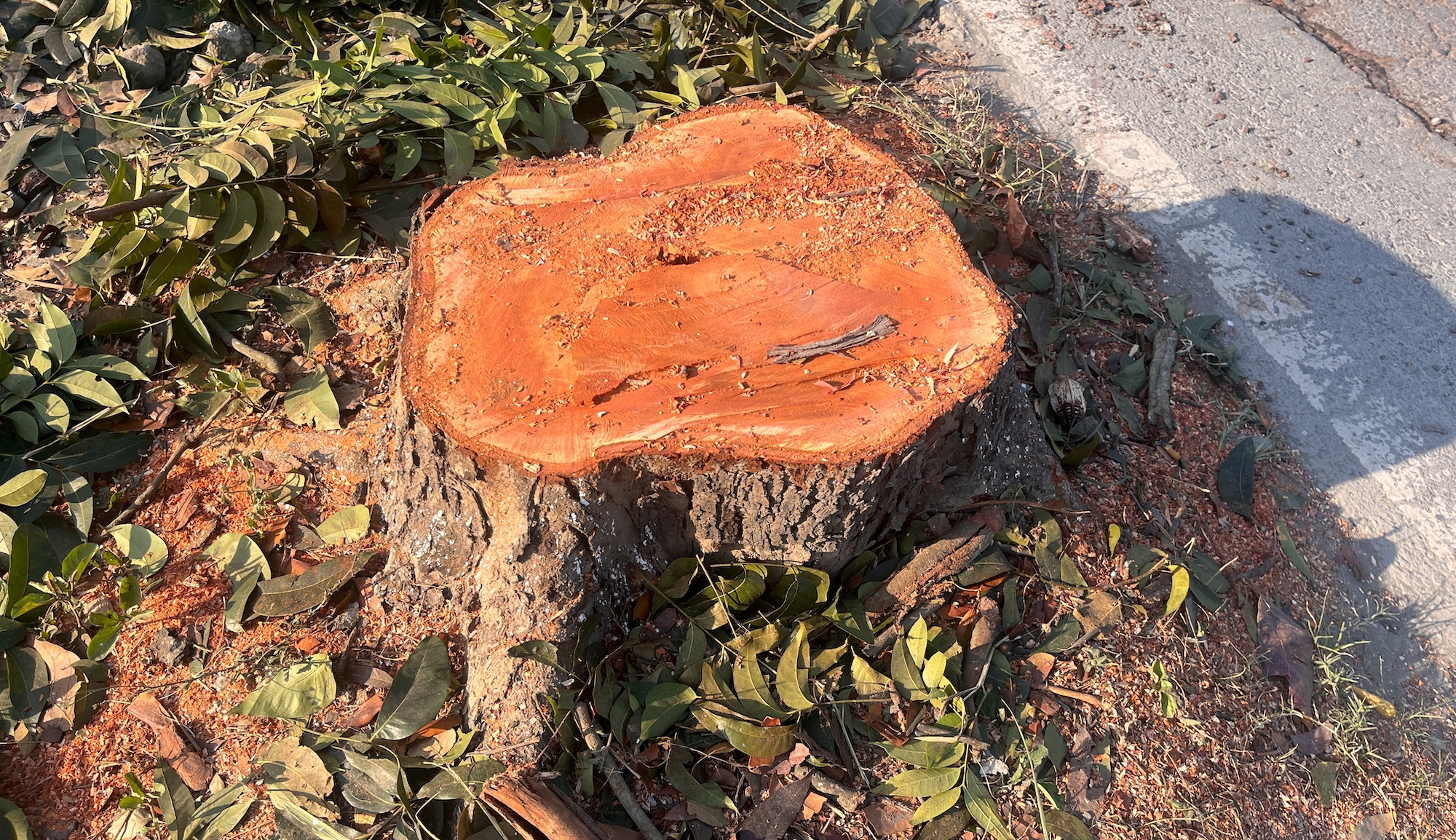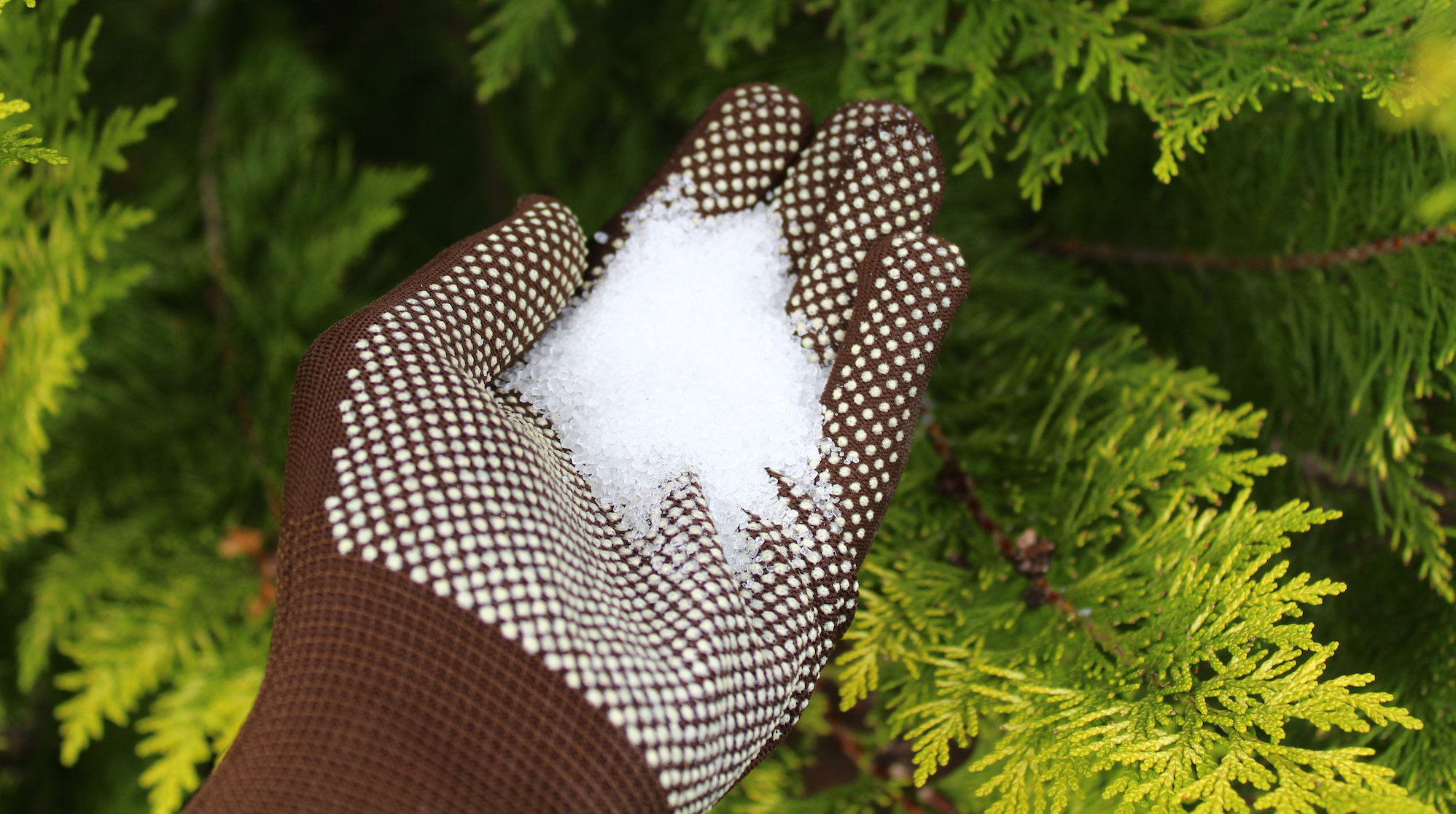[ad_1]
The tree is gone, but the stump remains. And then it sprouts. Again and again. Over coffee one morning, you find yourself asking how to kill that tree stump. Here are five ways with clear and actional steps, prioritizing natural methods that don’t require heavy machinery.
We may need to kill a tree stump for many reasons, from getting rid of an invasive species to planting a garden. Never plant a tree within 30 feet of your house or a powerline.
Some methods are more natural, and some are more harsh. As a rule, the natural methods are slower but safer. Most methods take weeks or months. Some, like grinding, are done in the afternoon.
Understanding Tree Stumps
While we commonly forget about it, there is as much of the tree underground as there is up top!
While severing the stem and leaving a stump seems like we’ve killed the tree, and for some species, it does, the organism is often still alive underground and will spring forth with new growth.
Whether or not a tree sprouts from the stump depends on the species and the size of the tree when it is cut.
- Oaks, maples, birches, and other hardwoods often sprout again from the stump.
- Most conifers do not.
- An 8-inch diameter black oak stump will sprout almost 100% of the time, a 20-inch diameter black oak will sprout only about half the time, and a 30-inch diameter black oak seldom.
- Relatively small, fast-growing trees often sprout with several or even dozens of new shoots.

5 Ways to Kill a Tree Stump
1. Epsom Salts

Look online, and you won’t get far before reading about killing stumps with Epsom salts. They dry out the tree, basically killing it by dehydration. It’s a low-key and safe way to try, although it may take a while.
Equipment needed: Epsom salts, drill and drill bit, and tarp.
Process: Drill holes (lots of holes) all over the top of the stump. Ideally, the holes should be an inch wide and ten inches deep. For an eight-inch stump, try for at least six holes, and more is better. Fill the holes with Epsom salts and water, then tarp the stump to prevent rain from washing it away.
Pros and Cons: Using Epsom salts is fairly safe and inexpensive. However, the method isn’t always effective and can take a while. Learn more about using Epsom salt in the garden.
2. Naturally
To kill any plant, we can deprive it of light. Just ask the very annoyed sage I left in the garage by accident. The same idea works for a tree stump. Once it has been turned into a stump, it must send up new growth and a fresh set of leaves on that growth to keep making food out of sunlight. While there is energy stored in the roots, it will eventually run out. Keep the new growth from getting light, and the tree stump will die of starvation.
Equipment needed: A heavy-duty tarp, rope, stakes.
Process: Wrap the tarp over the stump, folding it over if needed to ensure absolutely no light can get through. Cover the stump top, sides, and about six inches out from the base, then tie the tarp around the stump and stake down the sides.
Pros and Cons: This method is natural, safe, and effective. However, it will create an eyesore in your yard, and it will take a few months to kill the stump.
3. Vinegar
Why do you want your yard to smell like pickles? Just kidding. Vinegar contains acetic acid, which is a contact herbicide. It must be applied to live plant tissue, like the leaves and tender stems of stump sprouts.
Household white vinegar is about 5% acetic acid. It works as an herbicide, but not a strong one. Purchase stronger horticultural vinegar in the 20-30% range to kill tree stumps. It’s more effective and faster, but be sure to wear your protective gear. For added measure, drill holes in the stump and fill those with vinegar as well.
Equipment needed: Vinegar, spray bottle, protective gear, and drill and bit (optional).
Process: Spray vinegar over all surfaces of sprouts. Repeat as necessary until they stop coming up. For added measure, some people drill holes in the stump and fill those with vinegar as well.
Pros and Cons: Killing a stump with vinegar is inexpensive, but higher strengths of vinegar are still dangerous. Like other herbicidal treatments, nearby plants can be harmed. Learn more about the many uses of vinegar.
4. Grind it
Hiring a contractor or renting the equipment to grind a stump is an effective and fast way to kill it and get it out of the way. While it is expensive, you’ll have results right away. The stump and root collar are removed, leaving only the fine roots in the soil.
Equipment needed: Stump grinder, safety gear, a vehicle capable of towing a rented machine.
Process: Follow the instructions provided with the machine and grind away all portions of the stump and large roots.
Pros and Cons: It is quick and effective, it removes the question of how to kill the stubborn tree stump, and there are no harsh chemicals, but it is expensive and noisy. The equipment may not be able to access all portions of your yard.

5. Commercial Herbicide Treatments
A live stump is just a stubborn plant, and herbicides were designed to kill plants. While any broadleaf herbicide will be effective, some are specifically meant for stumps and trees. Wear proper safety gear, follow the label, and follow the label (I’ll say it again, follow all directions on the label). Be cautious of nearby vegetation you don’t want to kill.
Equipment needed: Herbicide, safety gear.
Process: Apply the herbicide according to the directions on the label. Usually, the stump needs to be fresh. The herbicide can also be applied to the stump sprouts’ foliage. The stump may need several applications.
Pros and Cons: This method is quick and inexpensive, but it leaves the stump to be dealt with. Harsh chemicals can damage nearby plants and are toxic to people and pets.
Which is the Best Method for Your Garden?
When figuring out how to kill a tree stump and choosing which method to use, you’ll have to consider–in the order most important to you–your budget, whether you need the physical stump removed or just killed, how fast you need the job done, and your ability level.
Small stumps can be dug by hand in an hour or less. A stump in your perennial garden bed isn’t a good place to bring a large grinder or herbicide. Generally, the more natural or less invasive methods are slower, but they may be the right choice if other plants you intend to keep are nearby.
FAQs
What time of year is best for killing tree stumps?
For methods that require the tree to take up a chemical and kill it, spring and summer are the best times to kill the stump. This is the time when the tree is most actively trying to grow versus the dormant winter when we generally prune trees.
Mechanical methods like digging or grinding can be done any time of year if the ground isn’t frozen.
How long does it take to kill a tree stump?
Depending on the method, a tree stump can be killed in a day, or it might take several months. Take your timeline into account when choosing a method–do you need it dead and gone right now?
How can I make a tree stump rot faster?
- Add high-nitrogen fertilizer. Just like in our compost piles, nitrogen feeds the microbes. These are bacteria and fungi that work to decompose the stump. Look for ammonium sulfate or ammonium nitrate.
- Drill holes in the stump’s surface and fill the holes with fertilizer.
- Reapply as it dissolves.
- Cover it with some compost to keep it moist and introduce additional microbes.
Summary
Use one of the five methods above to naturally kill a stubborn tree stump.
If you’re looking for a quick and easy method, use commercial herbicides, or grind the trunk down. If it’s a small trunk you may even be able to dig it out by hand.
If you’re looking for a middle of the road way to remove an old tree stump, consider using Epsom salts or vinegar. Just be careful that these treatments don’t spread to other plants in the area.
If you’re not in a rush to get rid of your stump, and don’t want to damage plants around the tree, you can deprive it of light. This method is a bit slower but is sure to keep any remaining plants and trees safe.
[ad_2]
Source link








 + Planting String of Watermelon Succulents
+ Planting String of Watermelon Succulents  with Garden Answer
with Garden Answer


